Part three of the From Estonia with Love interview. Motorcycle travellers Margus and Kariina talk about hand-held panorama photography, shooting video documentaries of their adventures, recording audio, food, music, border crossings and more...
Be sure to check out Part One and Part Two.
Anthony:
Now something I really like is your hand-held Panoramas. You don't trim the edges - so they are jagged where the individual panoramas overlap - but the freedom of the compositions is incredible! You grab everything that catches your interest. It looks really unique.
(Click any image to view full size and higher quality - All photos copyright Margus Sootla)
Personally I’ve hesitated making panoramas because I was convinced the results would be terrible without a pano-head on a tripod, finding the convergence point of the lens, all that stuff. I mean that’s really too much work when you’re dealing with life on the road.
I know there’s the parallax error issue that will mess-up objects that are very close to the camera, but you seem to avoid that problem in your compositions.
Have you got any tips for composing handheld panorama shots?
Margus:
Not really, I can't even describe it since all panoramas need different techniques. Just practice a little with handheld panoramas, give each frame some overlap and try to stitch them later and see if it works - many times you need to stitch them manually. You'll learn the small tricks in the process.
So are you shooting your panoramas in manual mode, so the exposures match?
Most of the time the camera is in manual mode, but recently I've started to use a polarizer on the panoramas. This makes things more complicated - I change the exposures over the frames plus I play with the angle of the polarizer to even out each frame. Sky is the most difficult and even with very hard trying you can't get the ideally smooth panorama in terms of exposure, but I've started to kind of like the "dynamic" feel in those panoramas. Maybe it's an acquired taste too.
Right, so how much overlap are you giving the photos?
Around 1/3 of the frame, but when I mess with polarizer I often overlap half of the frame to give the stitching program a better chance to more smoothly blend the changing exposures across the panorama.
You said you use a free program called Hugin to stitch the panoramas. Is it reasonably automated, or is there a lot of manual adjustments to make in the software?
Not really. For Hugin you can download the additional free Panomatic feature matcher which works in 90% of cases. Those last 10% or so you need to take some manual control by additionally adding control points, and then it can take a lot of time messing around with control points and in my case often also with changing and compensating exposures.
You’re shooting video with a standard digital video camera, and a helmet camera too.
What situations work better for video than for photography?
It's the long movement where you need video, obviously. But video is just too much work for me, so these days I let Kariina to do most of the filming.
I'm using a Canon VIXIA HF100
I've seen guys drop their Sony and JVC HD cameras on a concrete floor having no problems. So if I'd buy again, I'd go for a Sony HD - 95% of Canon's daylight image quality, way better low-light performance, reliable mechanics and better sound.
The helmet camera is Contour HD
Margus and Kariina in Ethiopia
India and Nepal

I really like the field recordings - the audio clips - they really bring the images to life! Tell me about what you were using to record sound.
For sound recording we use Sony PCM-D50
One good thing about Sony is that you can change the angle of the stereo microphones, X, II, Y positions depending how "straight", "focused" or "wide" you want the stereo sound to be.
That’s a pretty serious bit of audio kit! Do you use it hand-held? What about wind noise and handling noise?
All the time I handhold it. Internal noise levels are very low on this recorder even with high signal amplifications. And yes, biggest problem is the wind noise, so most of the time I use a windscreen. The mics are so sensitive to wind that in outside conditions, you almost can't work without a windscreen. If you get that and the levels right - I often use the limiter to avoid clipping - it's a good clean signal with no post-processing required.
Kathmadu, sounds of the city (press green play button)
Cabinda's choir, Congo
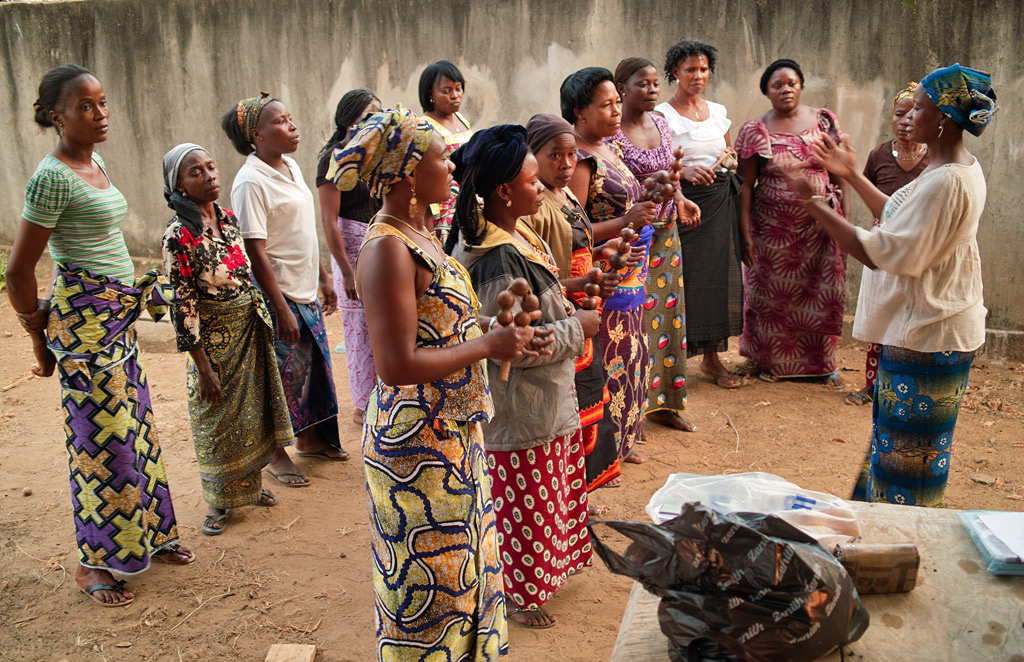
Birds on Lake Baringo, Kenya
I can’t imagine how many border crossings you have done by now! Ever have any trouble at borders with all that high-tech gear? Photo, video, audio, GPS etc?
Kariina:
So far no problem on crossings - you just keep quiet and do not mention what you have. Many countries have limited the photo equipment to one piece per person and have a limit on the film rolls as well, which we all have a little too many of course.
You’ve been on the road a long while, have you ditched any useless equipment to lighten the load?
Margus:
The big 400mm telephoto lens, camelback, bike cover and pro-level tripod are the main things that we've sent back home to lighten our load. We still think we have too much stuff, but most of the stuff we use on constant basis so we haven't send anything else home.
Most overland travellers stick to the main landmasses, but you’ve been through many places where water is a barrier - Indonesian islands for example. Is it difficult to cross small islands with all those ferries and boat rides?
With motorcycle it's fairly easy in Indonesia these days, they have quite good ferry connections, and for many of Indonesians a small motorcycle is their only means of transport. Although the ferries are often in a very poor technical condition the system more-or-less works between most islands.
Margus has been hit pretty hard with altitude sickness, you’ve both survived multiple crashes and countless tip-overs, But I think getting a military airlift out of the country must have been the more enjoyable of the misadventures, tell me a bit about that.
Kariina:
In retrospect, maybe yes, but when we were there, in that small town of Skardu in Northern Pakistan, with roads closed by landslides, our rear shock almost broken in two and our visas expired - in must have been one of the toughest times on this expedition.
But as always, things work out somehow. We had managed to smuggle our bike onto a passenger airplane going to Islamabad - a mission which did not have too much potential for success as passenger airplanes normally do not carry “dangerous cargo” such as motorbikes, and the airplane cargo hold door was barely-barely big enough to have the bike squeezed in. Now imagine squeezing in a bike that weighs some 230 kilograms, without a lift to the rear cargo door more than 2 meters up!
We were set to wait a whole week for a seat on a passenger plane, due to bad weather flights were being cancelled all the time and the number of passengers waiting for their turn to fly out was growing. But because one of the cargo workers that we had befriended knew the military officer responsible for the operations in that area, we were "booked" for the flight out of Skardu in the cargo hold of a C-130 with a whole bunch of people sitting on top of each other, some of them needing an emergency evacuation. A totally surreal experience.
(Click to enlarge photos)
Which countries had the best food? Any particular cuisine you’ll be”taking home” with you?
What's interesting is that we have learned to enjoy the food of most of the countries we have visited, no matter how basic it has been. But of course there is nothing like an Argentinian steak with a glass of local wine, or a Thai curry - As terribly spicy as it is, it is something one of a kind - the extremely varied street food in Malaysia, or the mad variety of Indian food. One of the great surprises was the food in Ethiopia which is something really different from the rest of the world, with “injera” mouth-watering sourdough pancakes with delicious fillings and fabulous coffee. But about food that we'd be taking home with us - I am sure we'll be eating a lot more rice when we return - while in Asia and the Middle-East we really got used to eat rice dishes twice a day, no problem!
How useful have the GPS and maps been? How do you navigate in the more difficult areas?
I guess they take something away from exploration, but we do like our paper maps and our GPS. The paper maps are good to get an overview of the area we are visiting, and to plot the course, whereas GPS can be very useful when trying to navigate in cities, or when you need to know if you're moving East or West, which can be tricky near the equator. I suppose we could do without a GPS, but a paper map is a must. Maps can be quite inaccurate sometimes, though, especially for the countries that not many people travel to, but it only adds to the adventure, right?
Tell me about the pace of your travels, you prefer not to cover as much distance as you did at first.
Definitely. Compared to the beginning of our trip, we have slowed down considerably - we ride less and spend more time in places that we like, getting a better picture of the local culture and enjoying ourselves more. Not that riding the bike is less enjoyable, but we are not pressed for time, and at this point it seems the balance between riding and lingering is quite right - we do just what we feel is right - if we feel like moving, we move, and if we don't, we don't.
You two are all over the internet, You’re writing in two languages, Estonian on your own webpage and English on the UKGSer, and ADVrider forums
Writing, editing videos, posting everything... That's a huge effort! What do you get out of all the hard work you put in?
Margus:
All the text is from Kariina, with me just sometimes adding some technical stuff when required. I'm too often brain-dead after a long riding day to think about anything, but she does research on places we've been or are planning to visit and she writes the story. Also she helps to select the photos from the best I've selected - so we have kind of "best of the best" selected then. I do the riding, pics and repairing, she does all the rest - story, video, food, paperwork, visas, budgeting and taking care of me. We really work as a team.
Kariina:
We started off only with our Estonian web page which gets around 1000 visits a day, which considering the size of our home country - and the number of people who can actually read Estonian - is quite a lot. But we've met so many people who want our expedition, and all we could offer was the Estonian version. So we decided to start a ride report in English too, which too has become popular. It is great if people find something for themselves from what we show and tell them. There are thousands of people dreaming of doing the same, but are unable due to children, mortgage or career. We feel privileged to share our journey.
OK Margus, I knew you were a serious vinyl junkie when you started talking about Azymuth and Aurthur Verocai in Brazil and electronic music in Detroit!
Now I didn’t even let record shopping cross my mind on my last trip, I figured vinyl records and motorcycle travel were fundamentally incompatible. Now I’m kicking myself! How the hell did you manage to carry records on the motorcycle!
Margus:
We've never actually carried the records with us for long distances - only from shop back to hotel or place we stay. They do fit in our panniers pretty nice, but they're just too heavy to carry on long distances as you told. So as soon as we've purchased a bunch we've gone to the post office and sent them to Estonia. Packing the stuff real well first, of course.
There aren't too many of them bought and sent, I guess we've bought around 50 records or so on this trip.
What are some of the best finds you’ve dug up?
Various Gal Costa and Milton Nascimento albums from Brazil, I've never seen those in Europe.
(listen to Margus's Brazillian mixtape here)
Yeah Brazil always has it’s entirely own section in the record shop, a real music mecca.
You’ve had a chance to go to the original Blue Note studios in the states, you got to see the big Jazzfest when you passed through Montreal, Ethiopia is a goldmine of cool tunes; where else in the world stood-out to hear good music?
I think almost every part of the world has it's own special sound and I've found good music almost everywhere. Unique Cambodian melodies, Indonesian meditative gamelan, that specific Arabian note scale and vocals, Australian native music, Pakistani qawwali, maximalist Indian Bollywood, African rhythm and Americas have something in everything to offer. There's just so much out there for a world music lover like me.
You’ve done some electronic music production under the name Nemos with Ülari Niinemägi, you’ve even got Kariina on vocals. Do you miss working on music?
I definitely do. But I feel listening world music while on a world expedition has compensated it a lot. This has also inspired me as a musician in many ways.
Have you been able to do anything on the road? I mean music production, any little laptop music sketches?
I thought I'd never make music on the road but I've managed to compose two tracks on the road. One track I started making in Indonesia and finished somewhere in Nepal - it has influences from those parts of the world. The other is a remix from a very famous Pakistani qawwali artist - I started making this track after being stuck for 2 weeks in Skardu because the road washed away in Karakoram Mountains in North Pakistan. This track is still not fully finished. Hopefully I have time for it when I return to Estonia.
And how about all those field recordings? Think you might use them in any musical projects when you get back to Estonia?
Yes, that's one of the key reasons why I convinced myself to spend my money and time on a audio recorder - I plan to use the material in my own music in the future.
Margus and Kariina are currently in Angola
Throw a few dollars into their gas tank here!

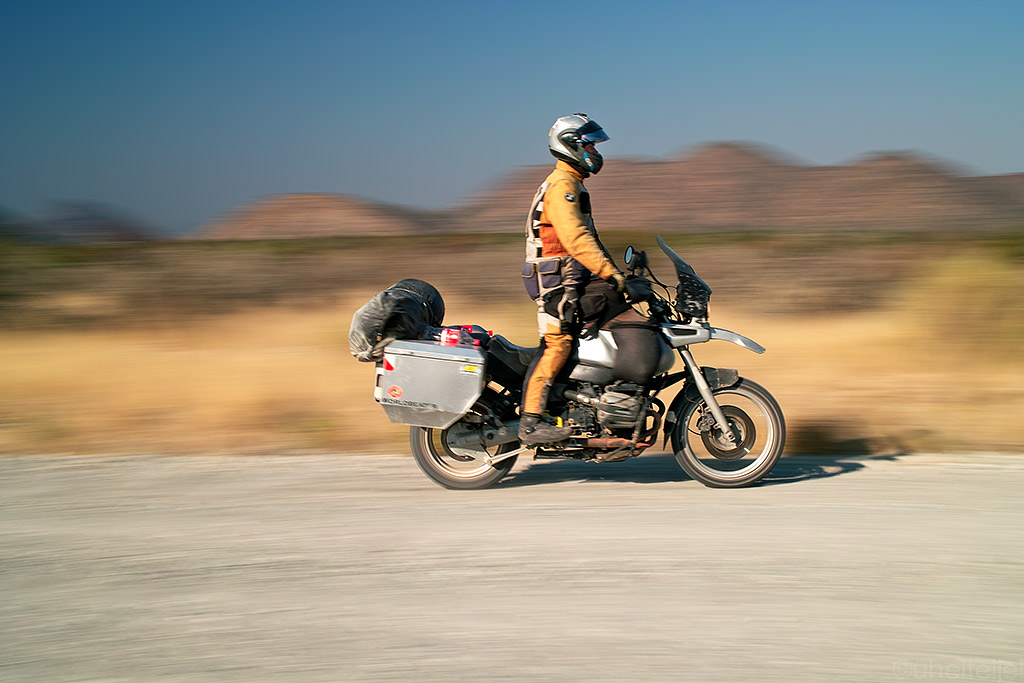












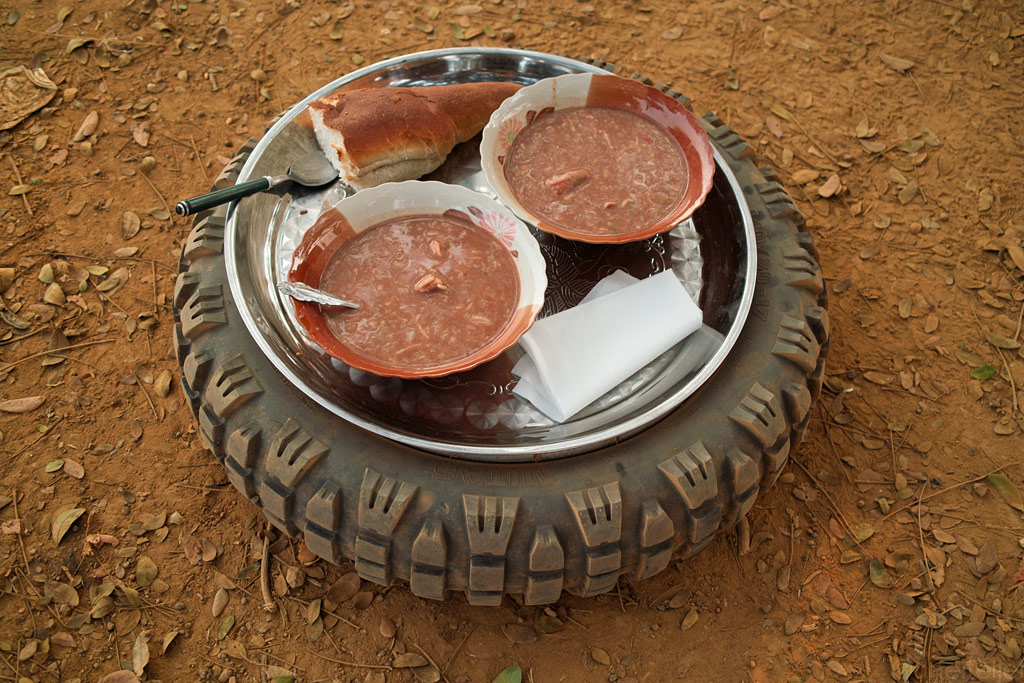






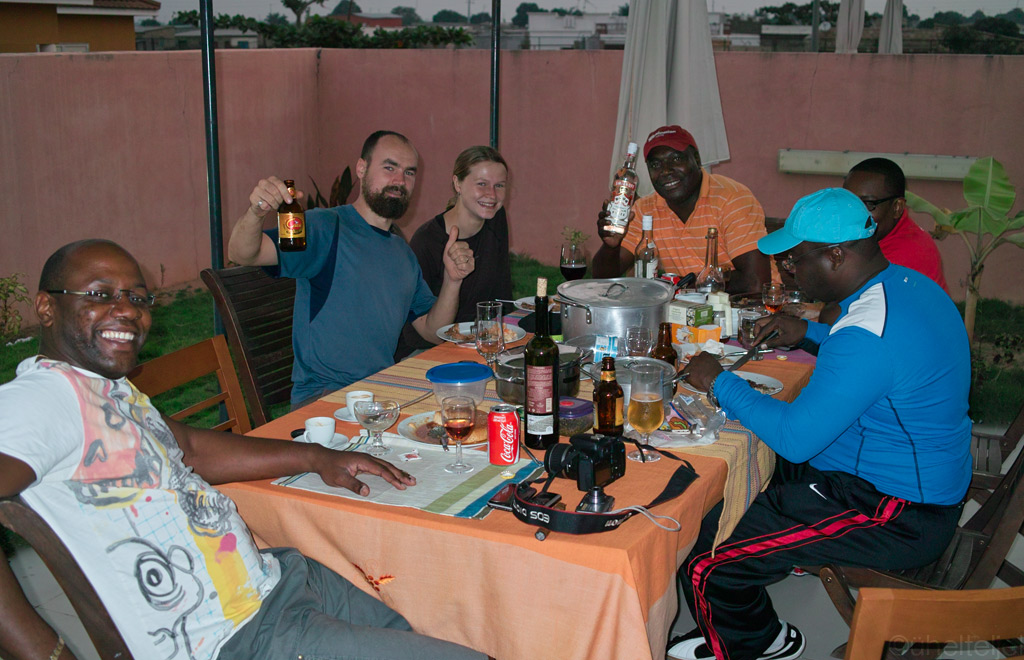
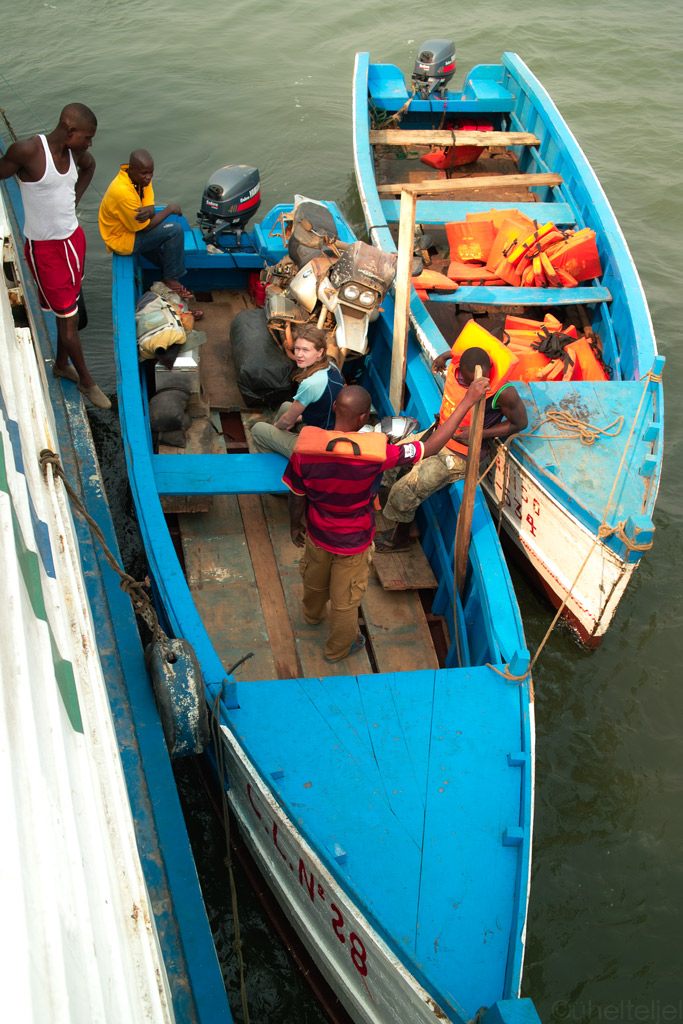








Post a Comment